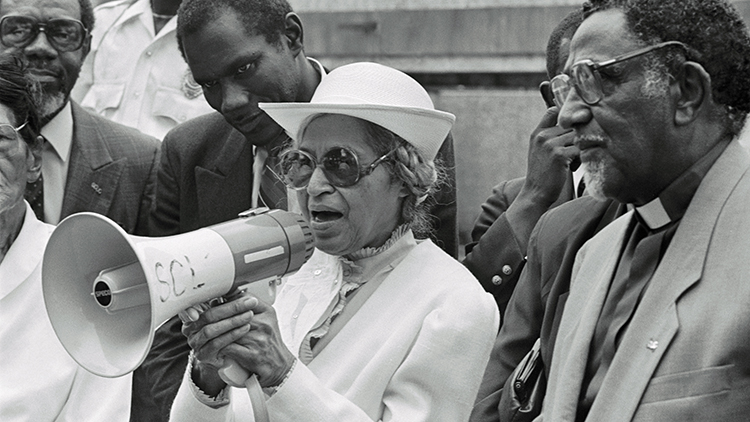
In 1955, Rosa Parks, an African American woman, refused to give up her seat to a White man on a public bus in Montgomery, Alabama. Her arrest for her refusal led to a year-long boycott of the public buses by African American residents in Montgomery. A year later, the United States Supreme Court ruled that the buses had to be integrated.
But what happened to Rosa Parks after the boycott and the integration of the buses? Parks and her husband both lost their jobs. Rosa Parks had difficulty working with local activists because she was so well-recognized. Most activist groups were led by men who did not want to work closely with women. She had no choice but to move from Alabama. She and her family settled in Detroit.
For years, she had difficulty finding work, and she also got very sick. But things improved when she and her husband found steady jobs. In 1965, she started working in the office of a local congressperson, John Conyer. Parks and Conyer worked on many things, including helping homeless people in Detroit find housing. She worked with several organizations that strived to end inequality in Detroit.
Parks admired and followed the work of both Martin Luther King, Jr. and Malcolm X. Parks had worked closely with King during the Montgomery Bus Boycott. When King was assassinated in 1968, she traveled to Memphis to support a march there.
In 1987, she and a friend founded the Rosa and Raymond Parks Institute for Self-Development. The organization ran bus tours that introduced young people to important civil rights and Underground Railroad sites throughout the country. In 1999, Parks received the highest honor a civilian can receive in the United States, the Congressional Gold Medal of Honor. She died in 2005, at the age of 92.
What Do You Think? What do you think were Rosa Parks’s greatest accomplishments? Why do you think so?
Bettmann/Getty Images



